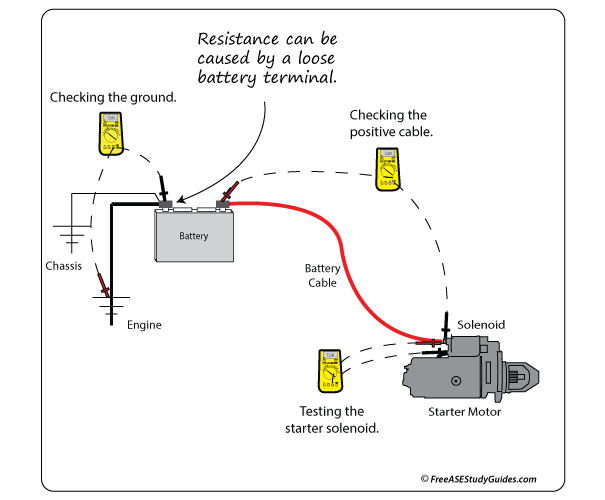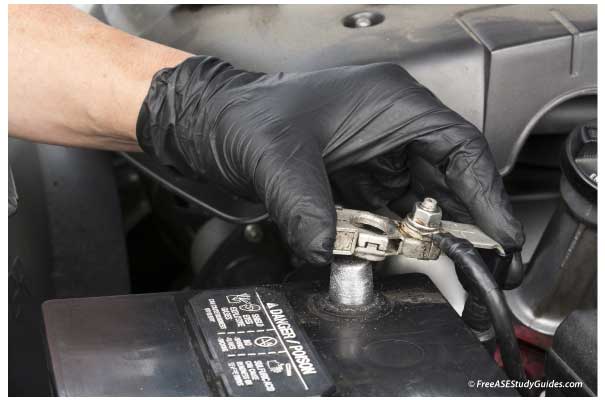Resistance in the Starter Circuit

All components in an electrical circuit have resistance. Voltage drop is the voltage dropped or "lost" as it passes through a component or resistance in a circuit. A voltage drop test is performed to find excessive resistance in a circuit. Voltage must be present in the circuit. Use a voltmeter at different points in the circuit.

A slow-cranking engine is often caused by resistance in the circuit, usually a loose or corroded battery terminal or connection. A good visual inspection, a battery test, and a voltage drop test are the best ways to find resistance in a starter circuit. Resistance can be a damaged wire, a loose connector, or bad relay contacts. It results in intermittent and no operation of the circuit and its component.